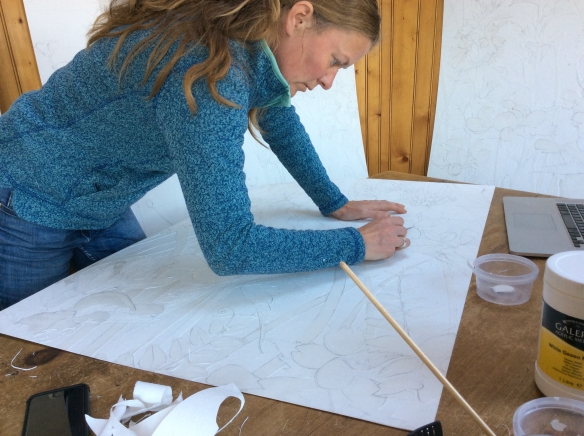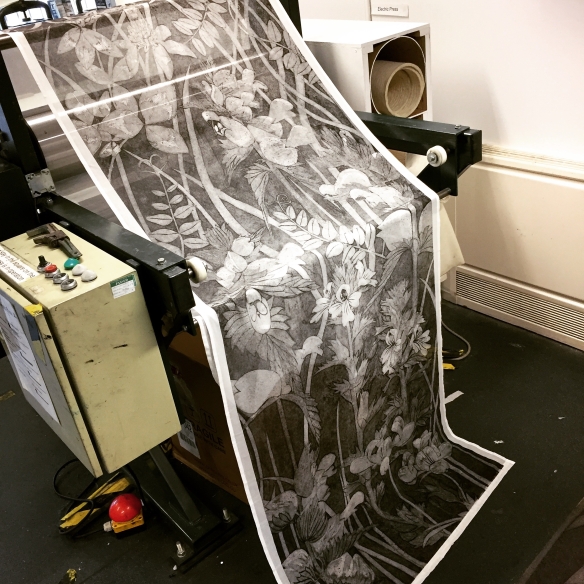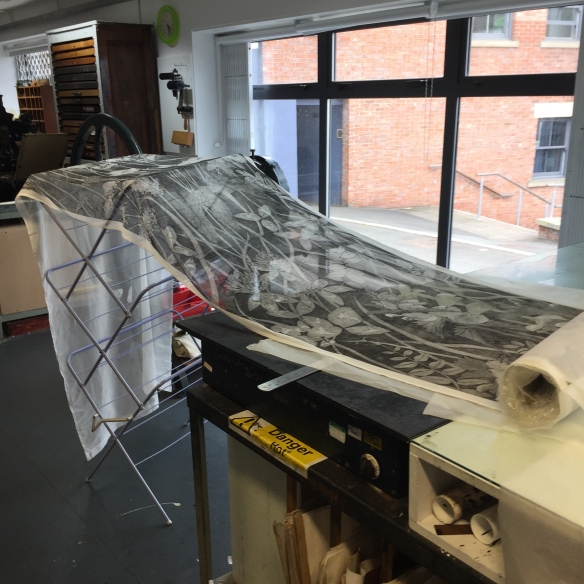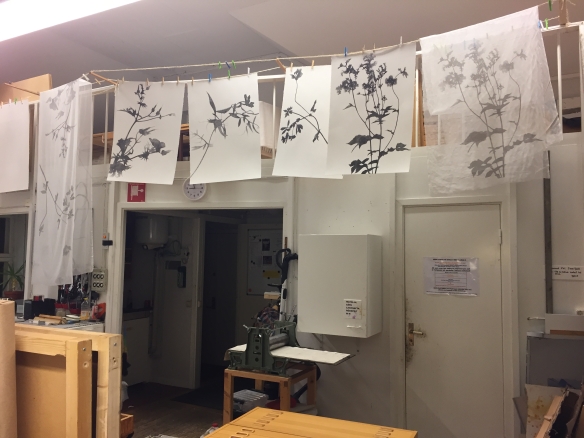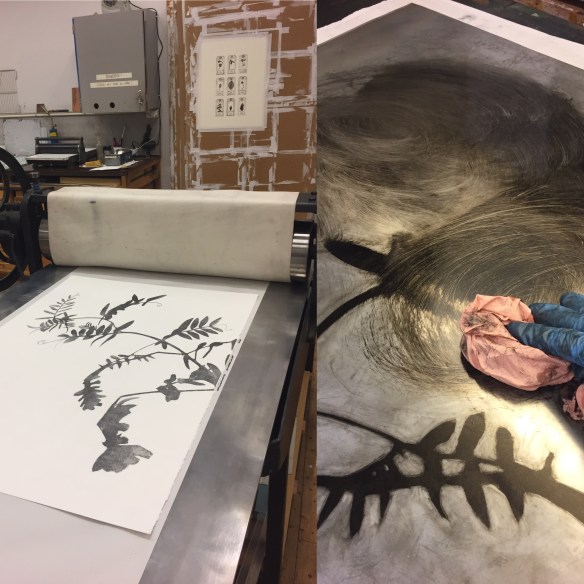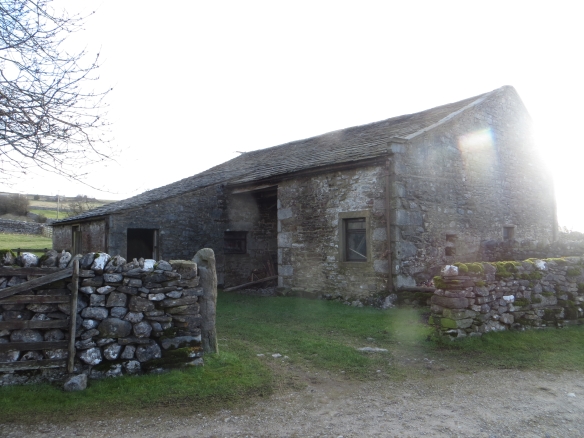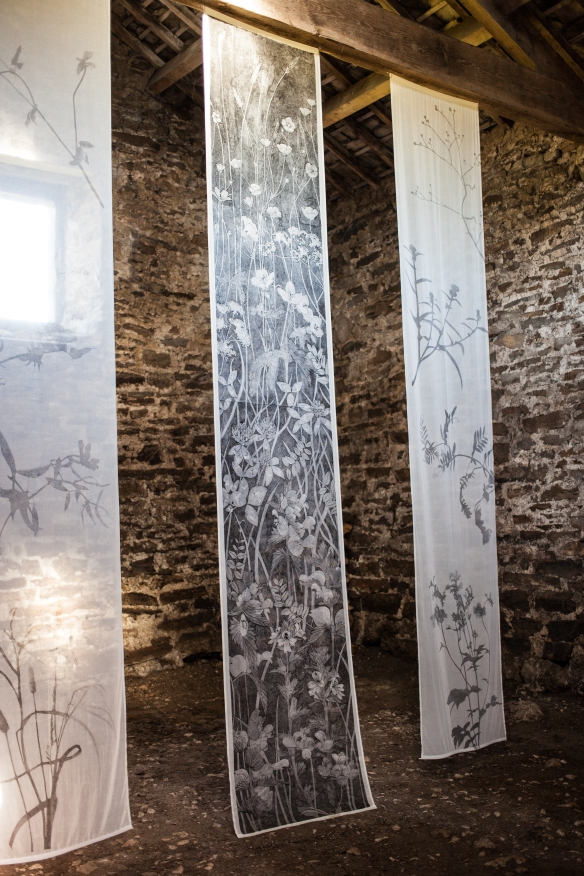
It’s a good seven months since I wrote following the installation of my large-scale print project, ‘Within These Walls’. I had hoped to have time to sit and write a poetical and reflective account and in hoping to do that, it never happened! 2017 was a year that was intensely busy, very rewarding but with not a lot of breathing space. Strangely, the one time I had some head space was during the Grassington Festival when I was at the installation for four hours every day and often had little gaps of time alone. During these pauses, I wrote haiku, printed, drew and generally had a very relaxing and fulfilling time. My friend, the photographer Paul Harris, visited the installation and very kindly created this rather lovely film of it. It can be viewed HERE
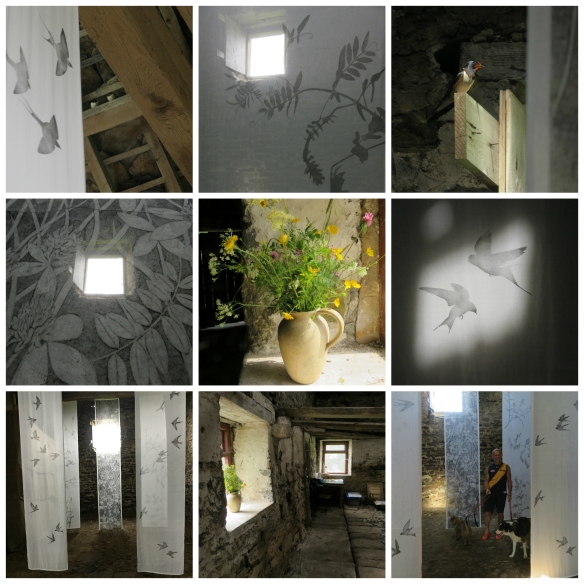
The installation was a success in that I had over 335 visitors and all had positive things to say. I was humbled by just how many people reacted to the work within the space saying that it made them feel peaceful, calm & inspired. The word ‘ethereal’ was repeatedly used and many felt that the barn took on the aura of a sacred space such as a church or cathedral. One woman told me she had visited early on a few occasions so that she could have the space to herself and wander amongst the hangings. A few comments from my guestbook sum up nicely the general feeling amongst my visitors:
“really suits the space well and enjoyed the walking aspect to find the barn. Lovely combination of light and shade & movement of the wind on the hangings”
“…the soul of this wondrous dale, thank you…”
“beautiful work in a special ancient place. Hay meadows & swallows – perfect summer image”
“fab to enjoy the swallows, art and barn on the longest summer day, many thanks”
“beautiful work – perfect for this peaceful space. Images make sense of ambient sounds”
“didn’t expect this! beautiful work in a special ancient place. Haymeadows and swallows in this wonderful old barn. Cheered up a dull day”
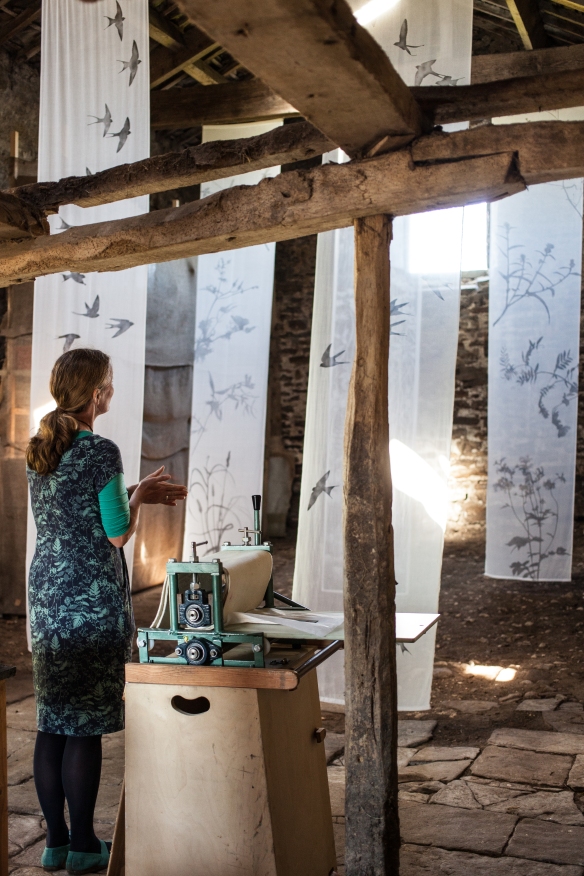
I also hadn’t envisaged just how much I would enjoy being within the space. Everyday was different and the light changed throughout each afternoon. Sometimes I would watch a spot of sunlight travel across the barn floor and up the hangings, other times they would whip about in the wind and, on many occasions, the parents of a brood of swallow chicks would fly amongst them.
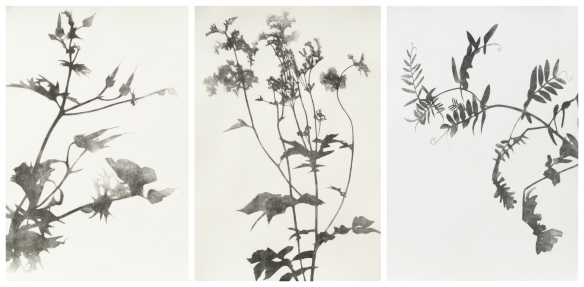
Since the festival, I have had one of the paper monotypes from ‘Within These Walls’ accepted for the New Light Prize Exhibition and it is currently touring having just finished the opening show at the Bowes Museum. I’m at Ålgården in Sweden at the moment and my original plan was to work on some large-scale paper prints to act as an exhibition to show alongside the hangings but, as yet, I don’t have a definite date and space in which to show them and another deadline (my next Collections project show) is looming. Conscious of all the work I need to do over the next few months for the Hepworth Print Fair (with Printmakers Circle), Printfest, West Dean Design and Craft Fair and ‘Collections’ at Sunny Bank Mills (not to mention the fact that I’m part of a team of artists trying to get a Three Peaks Art Trail off the ground for July 2018), I’ve put the development of the work on hold….temporarily. This is a project that I feel that I could work on for quite a few years to come. I’d really like more concentrated time to forget everything else and focus purely on making a body of work related to the installation but as an artist who makes all of their living from their printmaking, that involves exhibitions, shows, art fairs, talks and workshops and so I’m constantly busy and switching between deadlines. I could either do with some development funding or I will just have to work in fits and starts – as and when I can. Either way, I know I have the determination to carry it forward so watch this space!
I also have a new website (which I built in January in between doing my tax return!) so do check it out, it has a gallery for ‘Within These Walls’: www.hestercox.com
My thanks must go to Kate Beard (director of the Grassington Festival) for making the leap of faith and including me in the festival programme; Ian Harland for letting me use his barn and for all his hard work, support and cups of coffee; Paul Harris for his lovely film; Jo Denison for her beautiful photographs; my husband Brian for his continued encouragement and support (especially at 4am when I was lying awake worrying); my mum and Ian for helping on installation day and Matt Light for doing the scary bit of climbing up a huge ladder to install the five 4 metre long hangings (whilst having a small child and large puppy to look after)!

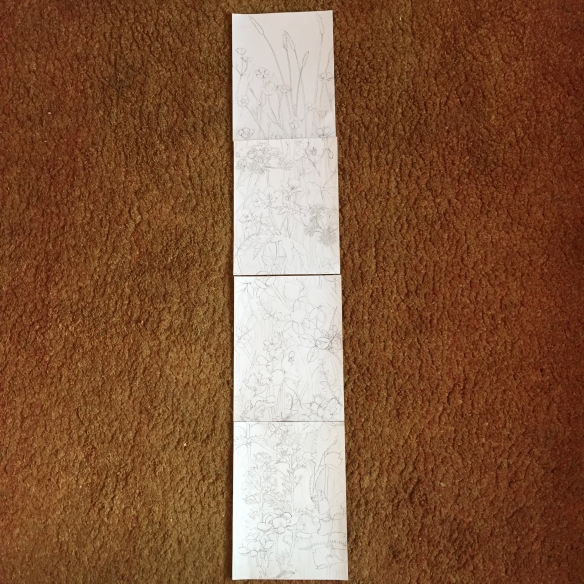
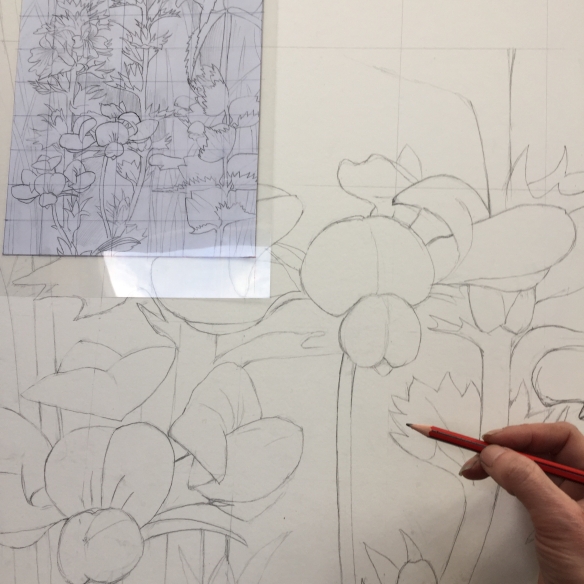 Using the grid system to upscale the drawings worked really well and took me back to my college days. I used four full sheets of mount board to make the plates and mainly used cutting, wood glue and gesso to create the collagraph.
Using the grid system to upscale the drawings worked really well and took me back to my college days. I used four full sheets of mount board to make the plates and mainly used cutting, wood glue and gesso to create the collagraph.